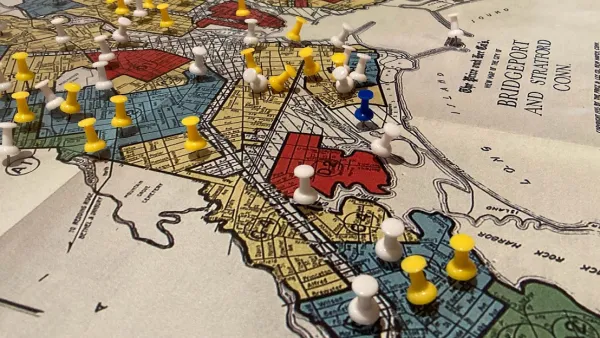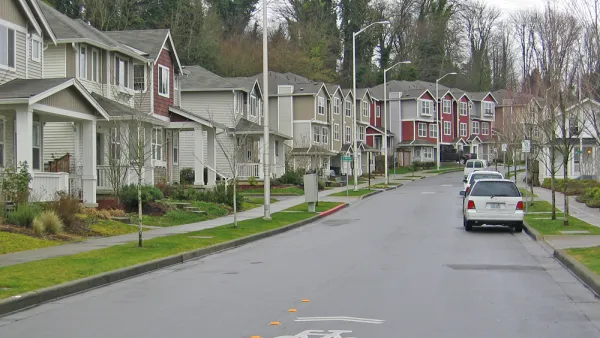The ugly story of the fence between a public housing community called New Haven and the nearby "middle class" community of Hamden, Connecticut will soon be over, but not because Hamden suddenly gained enlightenment.
"[Dillard Bennett's] family moved to New Haven from Georgia in 1959, seeking an escape from segregated buses and racial violence. Instead, they found what Mr. Bennett, who is black, called a signal that 'hatred for black folks' endures: 1,500 feet of thickly woven metal, enclosing a cluster of public housing projects on three sides," reports Benjamin Mueller.
Beyond it's literal presence, the fence also has a strong symbolic effect as a border between two worlds. "Built by Hamden in the 1950s to keep crime out of an aspiring middle-class neighborhood, the fence choked off access to jobs for public housing residents and obstructed emergency responders. Anger festered in the projects, and unemployment rates surpassed 75 percent. By 1990, New Haven’s violent crime rate nearly tripled the national average. Rocks sometimes flew over the fence, once battering a Hamden school bus."
But that's about to change, because recently "excavators began tearing down parts of the fence to make way for three roads that will eventually connect the public housing projects to Hamden — the first breach in this border in half a century. The first road is expected to poke through by September."
Unfortunately, the fence is not coming down out of the goodness of Hamden hearts. Rather, the Department of Housing and Urban Development discovered, after an investigation onto discriminatory housing practices, that the fence is actually on New Haven property, which is allowing the fence to come down despite the passionate protests of Hamden's residents.
FULL STORY: In Connecticut, Breaking Barrier Between a Suburb and Public Housing

National Parks Layoffs Will Cause Communities to Lose Billions
Thousands of essential park workers were laid off this week, just before the busy spring break season.

Retro-silient?: America’s First “Eco-burb,” The Woodlands Turns 50
A master-planned community north of Houston offers lessons on green infrastructure and resilient design, but falls short of its founder’s lofty affordability and walkability goals.

Delivering for America Plan Will Downgrade Mail Service in at Least 49.5 Percent of Zip Codes
Republican and Democrat lawmakers criticize the plan for its disproportionate negative impact on rural communities.

Test News Post 1
This is a summary

Test News Headline 46
Test for the image on the front page.

Balancing Bombs and Butterflies: How the National Guard Protects a Rare Species
The National Guard at Fort Indiantown Gap uses GIS technology and land management strategies to balance military training with conservation efforts, ensuring the survival of the rare eastern regal fritillary butterfly.
Urban Design for Planners 1: Software Tools
This six-course series explores essential urban design concepts using open source software and equips planners with the tools they need to participate fully in the urban design process.
Planning for Universal Design
Learn the tools for implementing Universal Design in planning regulations.
EMC Planning Group, Inc.
Planetizen
Planetizen
Mpact (formerly Rail~Volution)
Great Falls Development Authority, Inc.
HUDs Office of Policy Development and Research
NYU Wagner Graduate School of Public Service





























